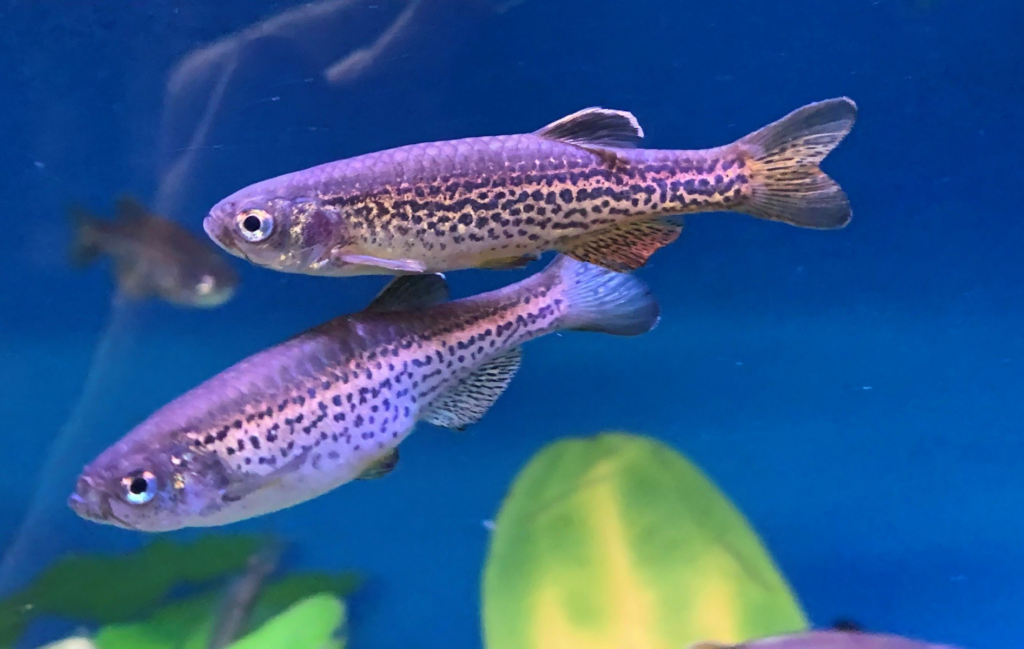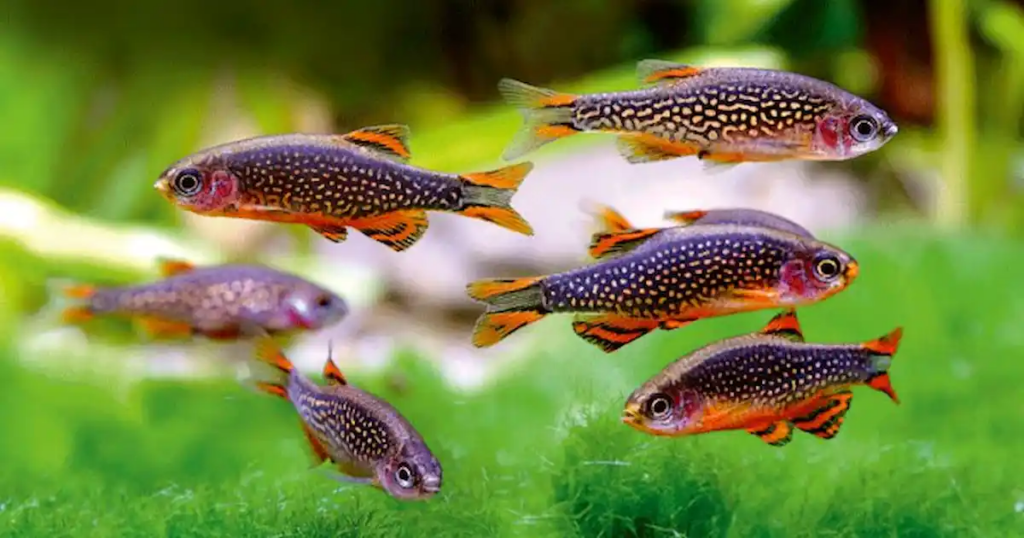When it comes to creating the perfect environment for our beloved aquatic pets, one of the primary considerations is temperature. Each fish species has specific temperature requirements to thrive and maintain optimal health. In this article, we will delve into the fascinating world of Danios and explore whether they can live in cold water.

Understanding the Ideal Water Temperature for Fish
Before we dive into the topic of Danios and cold water, it is crucial to understand the concept of ideal water temperature for fish. Water temperature plays a vital role in their metabolic rate, immune system, digestion, and overall well-being. While some fish thrive in warmer waters, others naturally inhabit cooler environments.
Exploring the Natural Habitat of Danios
Danios, also known as “zebra fish” due to their beautiful striped appearance, are amongst the most peaceful and popular fish species in the aquarium hobby. They are a freshwater species native to rivers and streams of South Asia. In their natural habitat, the water temperatures range from cool to slightly warm, making them adaptable to various conditions.

Can Danios Survive in Cold Water?
Contrary to popular belief, Danios are cold water fish and can indeed thrive in colder temperatures. These resilient creatures have evolved to tolerate a wide range of temperatures, including colder waters. However, it is essential to consider certain factors when keeping Danios in cold water.
Factors to consider when keeping Danios in cold water
- Temperature Range: Danios can withstand temperatures as low as 60°F (15°C) but prefer a range between 65-75°F (18-24°C). It’s crucial to ensure that the temperature does not drop below their tolerance level.
- Schooling: Danios are social fish and thrive best when kept in schools of at least six individuals. The interaction and companionship among the group contribute to their overall well-being and stress reduction.
- Acclimation: When introducing Danios to a new tank with colder water, it is essential to acclimate them gradually to minimize stress and allow them to adjust to the temperature change.
Risks and challenges of keeping Danios in cold water
Although Danios can survive in colder water temperatures, there are some risks and challenges to be aware of:
- Slower Metabolism: Coldwater slows down the metabolic rate of Danios, leading to a decrease in their activity levels. This reduced metabolism can affect their growth and overall vitality.
- Limited Breeding: Danios may have difficulty breeding in colder water, as low temperatures can disrupt their reproductive behavior.
- Disease Susceptibility: Coldwater conditions can make Danios more susceptible to diseases and infections. Therefore, it is crucial to maintain excellent water quality and monitor their health regularly.

The Importance of Temperature Stability for Danios
Temperature stability is crucial for the well-being of Danios, regardless of whether they are in cold or warmer water. Fluctuating temperatures can significantly impact their health and overall resilience.
Effects of fluctuating temperatures on Danios’ health
- Stress: Rapid temperature changes induce stress in Danios, compromising their immune system and making them more susceptible to diseases.
- Behavior Changes: Fluctuations in water temperature can result in erratic behavior, reduced appetite, and decreased vitality.
- Reproductive Challenges: Inconsistent temperatures may disrupt their breeding patterns, resulting in a decline in successful reproduction.
Tips for maintaining temperature stability in an aquarium
- Use a Reliable Heater: Invest in a high-quality aquarium heater that can accurately maintain the desired water temperature and prevent sudden fluctuations.
- Regular Monitoring: Use a reliable thermometer to monitor the water temperature consistently. Check it at least once a day to identify any significant deviations.
- Proper Insulation: Insulating the aquarium, especially during colder months, can help maintain a stable temperature. This can be achieved by using a heater guard and ensuring there are no drafts around the tank.

Alternatives to Cold Water for Danios
While Danios can thrive in cold water, providing them with slightly warmer conditions can enhance their overall well-being and encourage their natural behaviors.
Optimal temperature range for Danios
The optimal temperature range for Danios lies between 65-75°F (18-24°C). Keeping the water within this range allows them to display their vibrant colors, promotes their activity levels, and supports healthy growth.
Suitable tank mates for Danios in warmer water
If you choose to keep Danios in slightly warmer water, several compatible tank mates can coexist harmoniously. Some suitable options include guppies, tetras, rasboras, and Corydoras catfish.
Managing Danios in Different Seasons: Hot Summers and Cold Winters
Danios can adapt to temperature changes, but it’s crucial to maintain their well-being during hot summers and cold winters. In summer, when the water becomes too warm, ensure the tank doesn’t overheat by placing it in a cooler part of the house or using a fan.
In winter, an unheated tank may become too cold, so consider the course of action to stabilize the temperature, ensuring your Danios remain comfortable. Maintaining their habitat during these extreme conditions will help your fish stay fine, ensuring they thrive year-round.

Best Practices for Keeping Danios in Different Water Temperatures
Caring for Danios in cold water:
- Monitor Water Parameters: Regularly test the water quality, including temperature, pH, ammonia, and nitrate levels, to ensure optimum conditions for Danios in colder water.
- Provide Adequate Space: Danios require enough space to swim and explore. Consider a tank size of at least 10 gallons to accommodate a school of Danios.
- Balanced Diet: Offer a varied diet consisting of high-quality flakes, pellets, and frozen or live foods to meet their nutritional needs.
Caring for Danios in warmer water
- Maintain Temperature Stability: Ensure that the temperature remains within the optimal range of 65-75°F (18-24°C) for Danios in warmer water.
- Provide Hiding Places: Create a well-decorated tank with plants, rocks, or caves to provide hiding spots for your Danios.
- Regular Water Changes: Perform regular water changes to maintain pristine water quality and prevent any potential health issues.
Can You Keep Zebra Danios with Other Fish in an Unheated Tank?
Zebra Danios are well-known for their adaptability, making them suitable companions for other fish, even in an unheated tank. These coldwater fish can comfortably coexist with species like minnows and Neocaridina shrimp, provided they are kept in groups to reduce stress.
While Zebra Danios can tolerate cooler temperatures, it’s essential to monitor the water conditions, especially during winter, to ensure all tank inhabitants remain healthy. Keeping an eye on their behavior and providing a balanced environment will help your Zebra Danios thrive alongside their tank mates.
Conclusion
Danios are cold water fish that can indeed live in colder temperatures. However, it is essential to consider the specific temperature range that suits their needs and to provide a stable environment to promote their overall well-being.
By understanding their natural habitat, monitoring water temperature, and implementing best practices, you can provide a comfortable and enriching environment for your Danios.


